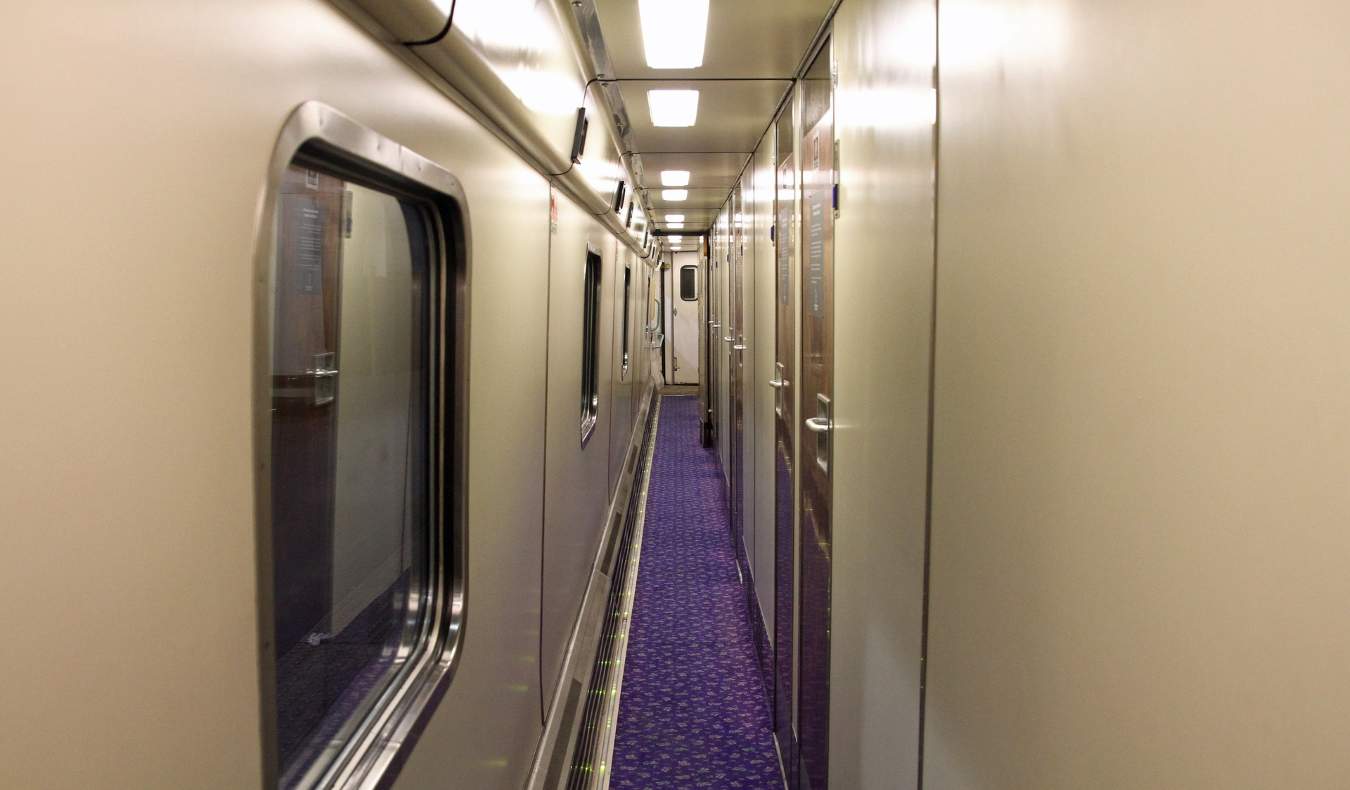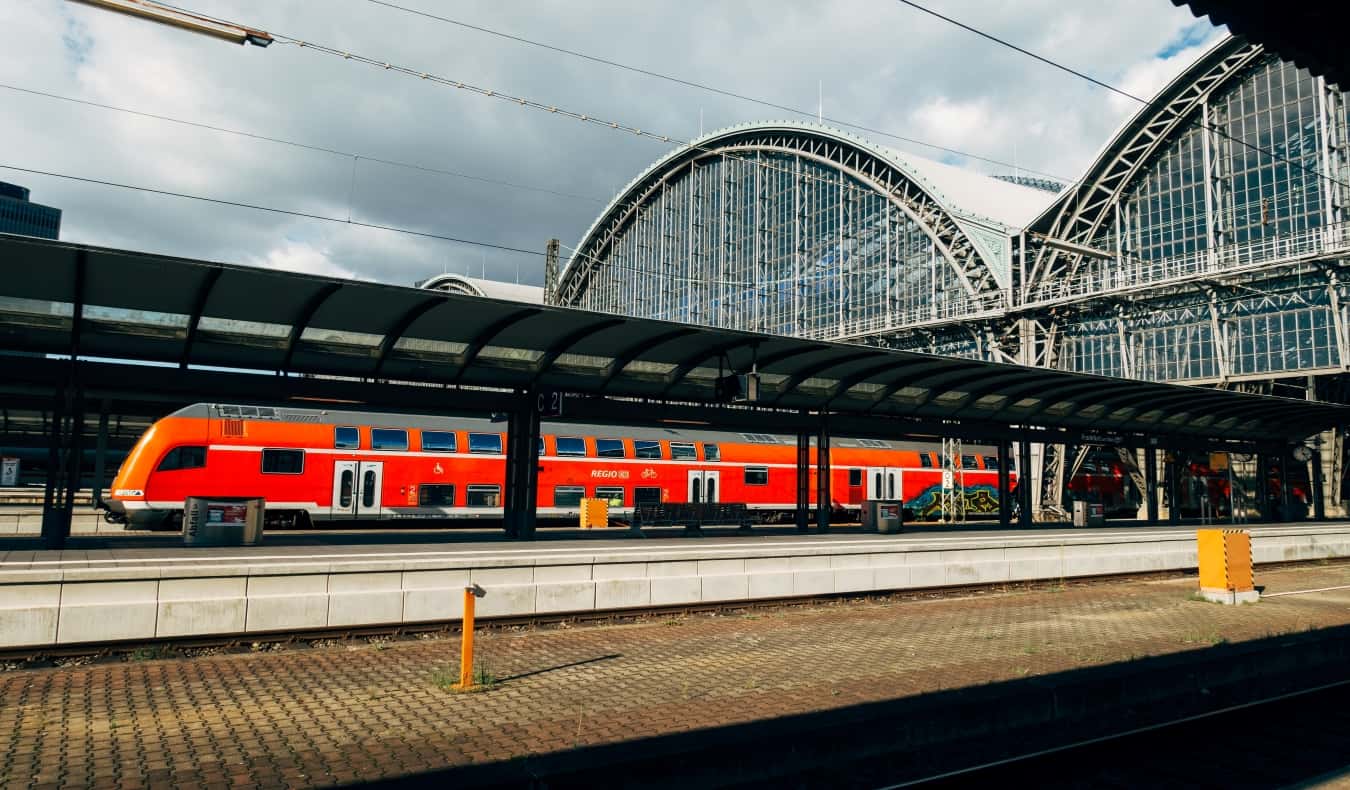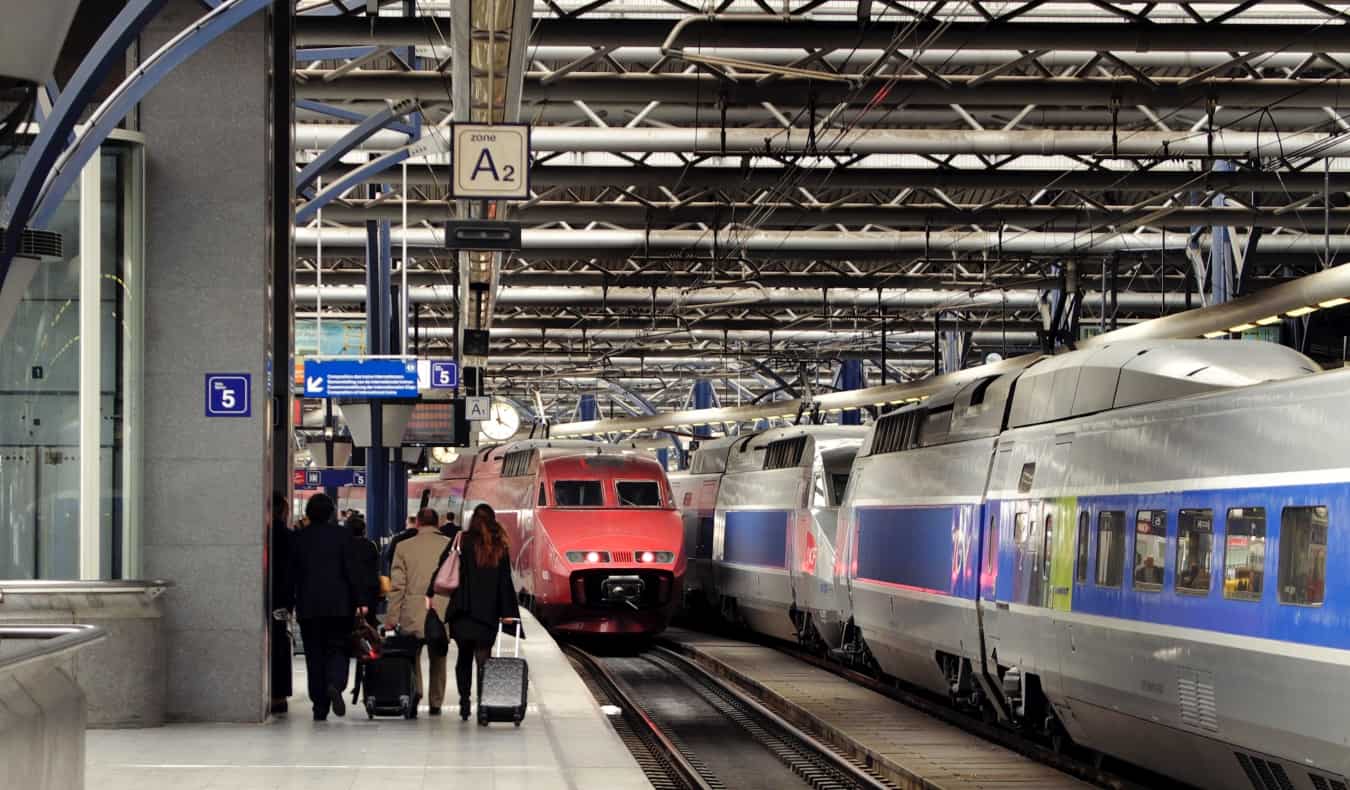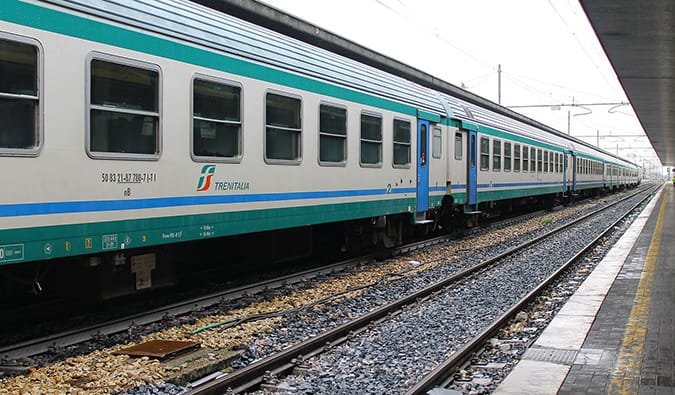
Last Updated: 3/17/22 | March 20th, 2022
Traveling Europe by train is one of the most popular ways to see the continent. Over the past few decades, the rise of the Eurail Pass has cemented train travel as an iconic way to navigate the continent.
These days, there are also tons of affordable bus options (like Flixbus) for budget backpackers and travelers looking to save money on transportation around Europe.
But as many budget travelers have discovered, a 12-hour overnight bus ride loses its charm quite quickly. Sure, overnight buses are cheap, but you also lose out on a decent sleep which impacts the next day’s travels.
The solution? Night trains.
Night trains are a great way to make the most out of your time in Europe while still saving money. They may not be cheaper than the bus, but they are still quite affordable and much more comfortable.
As the climate crisis worsens, they are a great environmentally-friendly travel option as well. In fact, environmental concerns are leading to a revival of train travel in Europe (including sleeper trains). Millions of euros are being poured into adding more routes as a way to encourage train travel over short-haul flights.
But perhaps the best part about night trains is that it saves you from paying for a night of accommodation. Your train ticket does double duty as both transportation and a place to rest your head. You also save time with night trains as you won’t be using up a “day” of travel to get to a new destination. Instead, you’ll be covering the distance at night, ensuring that you make the most out of your (possibly limited) travel time.
In this post, I’ll share everything you need to know about night trains in Europe so you can stay comfortable, save money, and make the most out of your trip!
Types of Sleepers
In addition to just booking a standard first or second-class ticket and sitting in a regular seat all night (which is the cheapest option but also the least comfortable), you have the option of booking a bed for the duration of your trip. There are generally two types of sleeping compartments on night trains in Europe:
- Shared compartments (called “couchettes”)
- Private cabins
Shared compartments usually have 3-6 bunk beds (stacked 2-3 high) and are the equivalent of a train dorm room. You get a bed in a shared room and that’s it. Depending on the country/train, there are 3, 4, or 6 beds in a compartment. The more beds there are, the cheaper the ticket.
Keep in mind that shared compartments are not separated by gender.
Private cabins are like private rooms; you won’t have to share them with anyone. These usually have one or two beds so if you’re traveling with a partner you can both share a cabin. Private cabins are more spacious and on some routes, there’s even the option to have a private bathroom, including a shower and toilet, right within your cabin.
When it comes to storage, there’s always space to store your things under the bed, on a luggage rack, or worst-case scenario, on your bed. Depending on the size of your bag, space may be limited if you are in a shared compartment. If you just have a backpack and day bag you won’t have any issues, but if you have a massive suitcase then you might run out of space. If that’s the case, a private cabin may be best.
Night Train Routes in Europe
There are plenty of night routes available for anyone looking to cover more ground while they sleep away the kilometers. Here are the most popular night trains in Europe:
- EuroNight (Czech Republic-Poland)
- EuroNight Ister (Romania-Hungary
- EuroNight Kálmán Imre (Austria–Germany–Switzerland-Hungary)
- EuroNight Lisinski (Austria-Croatia-Germany-Slovenia)
- EuroNight Metropol (Austria-Czech Republic-Germany-Slovakia-Hungary)
- Berlin Night Express (Germany-Sweden)
- Hellas Express (Serbia-Greece)
- Snälltåget (Sweden)
- SJ (Norway-Sweden)
- Santa Claus Express (Finland)
- ÖBB Nightjet (Austria-Italy-Germany-Switzerland)
- Intercités de Nuit (France)
- Caledonian Sleeper (England-Scotland)
- Bosphorus Express (Romania-Turkey)
As you can see, they cover almost all of the continent so you have a lot of options when it comes to finding night trains that suit your itinerary.
They are all accessible with a Eurail Pass. This convenient map on the Eurail website shows all of the night trains in Europe.
For more on Eurail, check out these posts:
- The Ultimate Guide to Saving Money with Eurail Passes
- A Complete Guide to the Eurail Global Pass
- Is the Eurail Pass Right for You?
Of course, there is also the epic and world-famous Trans-Siberian Railway that stretches across Russia, Mongolia, and into China as well as the ultra-luxury Orient Express (which costs upwards of $5,000 USD for a return ticket from London to Venice).
Additional Night Train Information
Ticket Prices
Ticket prices for night trains vary depending on the distance, time of year, and whether or not you have a Eurail Pass.
With a Eurail Pass, sleeper accommodation starts at around 13 EUR per person and go up to over 100 EUR for certain routes.
Without a Eurail Pass, prices vary but expect to pay at least 50 EUR for a one-way ticket.
Reservations
Reservations are mandatory whether you have a Eurail Pass or not. You need to reserve your seat a couple of days ahead of time, especially during the busy summer months. You can reserve up to 6 months in advance, which might be necessary on very popular routes or those with limited service.
To make reservations with a Eurail Pass, you can use their Rail Planner App or contact the specific rail companies directly via telephone or book via their online booking portal. Last-minute reservations will need to be made in person. With the Eurail pass, the average reservation fee for night trains is 20 EUR.
If you don’t have a Eurail Pass, reservations must be made directly with the company you want to travel with. You can book online, over the phone, or in person.
On the Train
Night trains generally leave after 7pm and arrive in the morning, anytime between 6-10am depending on the distance.
Depending on the route and departure time, your compartment or couchette may not yet be converted to beds when you board so that you can sit upright until bedtime. Then, later on, the sleeping car attendant comes around to convert the seats to beds.
Tickets and rail passes are checked soon after boarding, and if you’re traveling within the Schengen Zone, there are no passport checks. However, if you’re crossing borders outside of the Schengen Zone, you may be woken up to show your passport (on some trains, they safely hold your passport until morning to prevent this)
While some night trains offer meals or have a dining car, it’s not the norm so it’s best to be prepared and bring your own food and drinks.
The Man in Seat 61, the ultimate guide to train travel anywhere in the world, has detailed descriptions of what you can expect on all night train routes in Europe.
Safety
Night trains in Europe are just as safe as their daily counterparts. If you’re in a shared compartment and want to ensure your valuables are safe, keep them within reach and out of sight while you sleep. Your backpack will likely be on your bed but for extra security, you can secure it to the bed with a carabiner, a cable luggage lock, or a belt.
If you’re sleeping in the main compartment (as in you don’t have a bed and are sitting up) you can wrap one of the straps of your backpack around your leg so it can’t be removed while you sleep.
That being said, theft is quite rare so you don’t need to worry too much. Just take a few precautions and you’ll be ok.
For more of my thoughts on safety in Europe, check out this article.
My Experience with Night Trains
To give you a quick sense of what to expect, here’s a short video about my experiences riding the night trains in Europe:
If you’re looking for a unique, affordable way to travel around Europe then be sure to add some night trains into your itinerary. They’re more comfortable than the bus, more sustainable than short flights, and they save you a day of travel so you can make the most out of your itinerary.
While the quality of the trains varies from country to country, night trains are a classic experience every backpacker in Europe should have. Don’t miss them!
Get Your In-Depth Budget Guide to Europe!
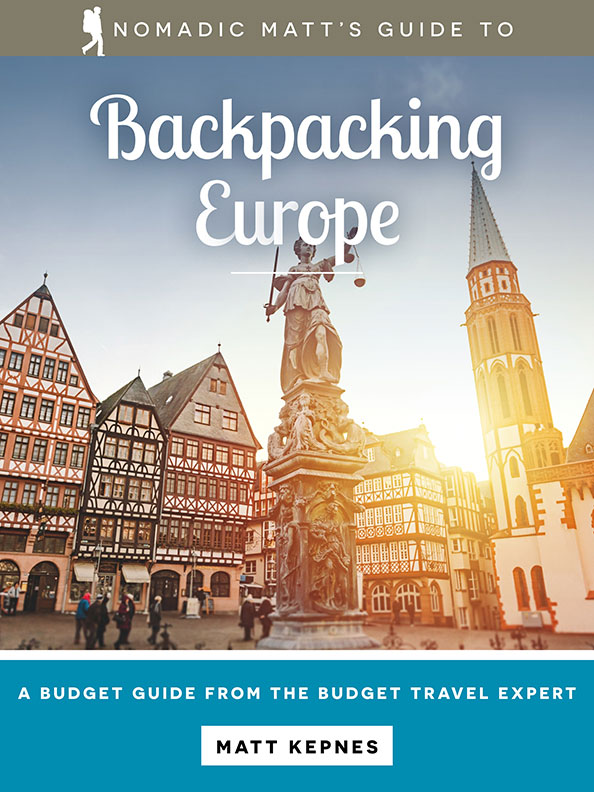
My detailed 200+ page guidebook is made for budget travelers like you! It cuts out the fluff found in other guides and gets straight to the practical information you need to travel while in Europe. It has suggested itineraries, budgets, ways to save money, on and off the beaten path things to see and do, non-touristy restaurants, markets, bars, safety tips, and much more! Click here to learn more and get your copy today.
Book Your Trip to Europe: Logistical Tips and Tricks
Book Your Flight
Use Skyscanner to find a cheap flight. They are my favorite search engine because they search websites and airlines around the globe so you always know no stone is left unturned!
Book Your Accommodation
You can book your hostel with Hostelworld as they have the biggest inventory and best deals. If you want to stay somewhere other than a hostel, use Booking.com as they consistently return the cheapest rates for guesthouses and cheap hotels. Here are my favorite hostels in Europe.
Don’t Forget Travel Insurance
Travel insurance will protect you against illness, injury, theft, and cancellations. It’s comprehensive protection in case anything goes wrong. I never go on a trip without it as I’ve had to use it many times in the past. My favorite companies that offer the best service and value are:
- Safety Wing (for everyone below 70)
- Insure My Trip (for those over 70)
- Medjet (for additional repatriation coverage)
Looking for the Best Companies to Save Money With?
Check out my resource page for the best companies to use when you travel. I list all the ones I use to save money when I’m on the road. They will save you money when you travel too.
Want More Information on Europe?
Be sure to visit our robust destination guide to Europe for even more planning tips!
